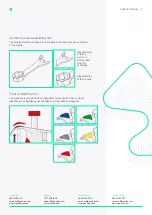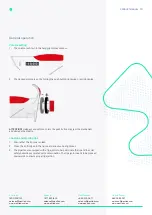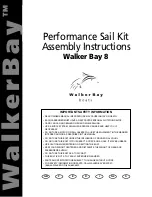
•
1. Place the calibration tool into
the holes of the calibration
adjustment lock (under the
push button).
2. Turn the adjustment lock
anticlockwise to decrease and
clockwise to increase the volume.
3. Repeat checking calibration until
the pipetting results are correct.
12
PRODUCT MANUAL
1800 358 101
www.westlab.com.au
+64 9 553 3677
www.westlab.co.nz
646 568 5391
www.westlab.com
1 877 822 1455
www.westlab.com
Australia
New Zealand
United States
Canada
Autoclaving
The pipettes are fully autoclavable by steam at 121°C, 1.05 bar for 15 min.
Autoclave the complete pipette without any disassembling.
After autoclaving under the mentioned conditions, allow the pipette to cool and dry
for 6 hours before use. It is not required to re-calibrate the pipette after autoclaving.
If the pipette is autoclaved frequently, the piston and springs should be greased with
the lubricant supplied with each pipette to maintain smooth movement.
Calibration
Performance testing should take place in a draught-free, stable environment with a
relative humidity above 50% and constant (±0,5 °C) temperature between 15°C and 30°C.
The weighing vessel, pipette, tips, and distilled water need to have been in the room for a
sufficient time, at least 2 hours, to reach equilibrium with the room conditions.
Use an analytical balance with a readability of 0.01 mgs. 10 measurements for each test
volume shall be carried out. For variable volume pipettes, at least three volumes shall be
tested (nominal volume, 50% of nominal volume, and 10% of nominal volume).
1. Select the test volume. Do not change the setting during the test cycle of
10 measurements.
2. Fit the selected tips to the pipette cones.
3. Fill the tips with distilled water and condition the pipette before testing by aspirating
and dispensing the distilled water in the tips five times. Afterwards discard the tips.
4. Attach new tips on the pipette cones and pre-wet the tips once.
5. Aspirate the distilled water and pipette it into the weighing vessel
(use forward pipetting technique).
6. Weigh the pipetted quantity with an analytical balance and record the weight.
Repeat the test cycle until 10 measurements have been recorded.
7. Convert the recorded masses to volumes, calculate the mean volume,
systematic error and random error as described in EN ISO 8655-6:2002, part 8.
8. Compare the systematic error (inaccuracy) and the random error (imprecision)
with the values in the specification table.
The calibration of the pipette must be set even if only one of the results falls outside
the permitted range.
For checking the calibration of a multichannel pipette, each channel should be
considered as an individual pipette.
Recalibration


































